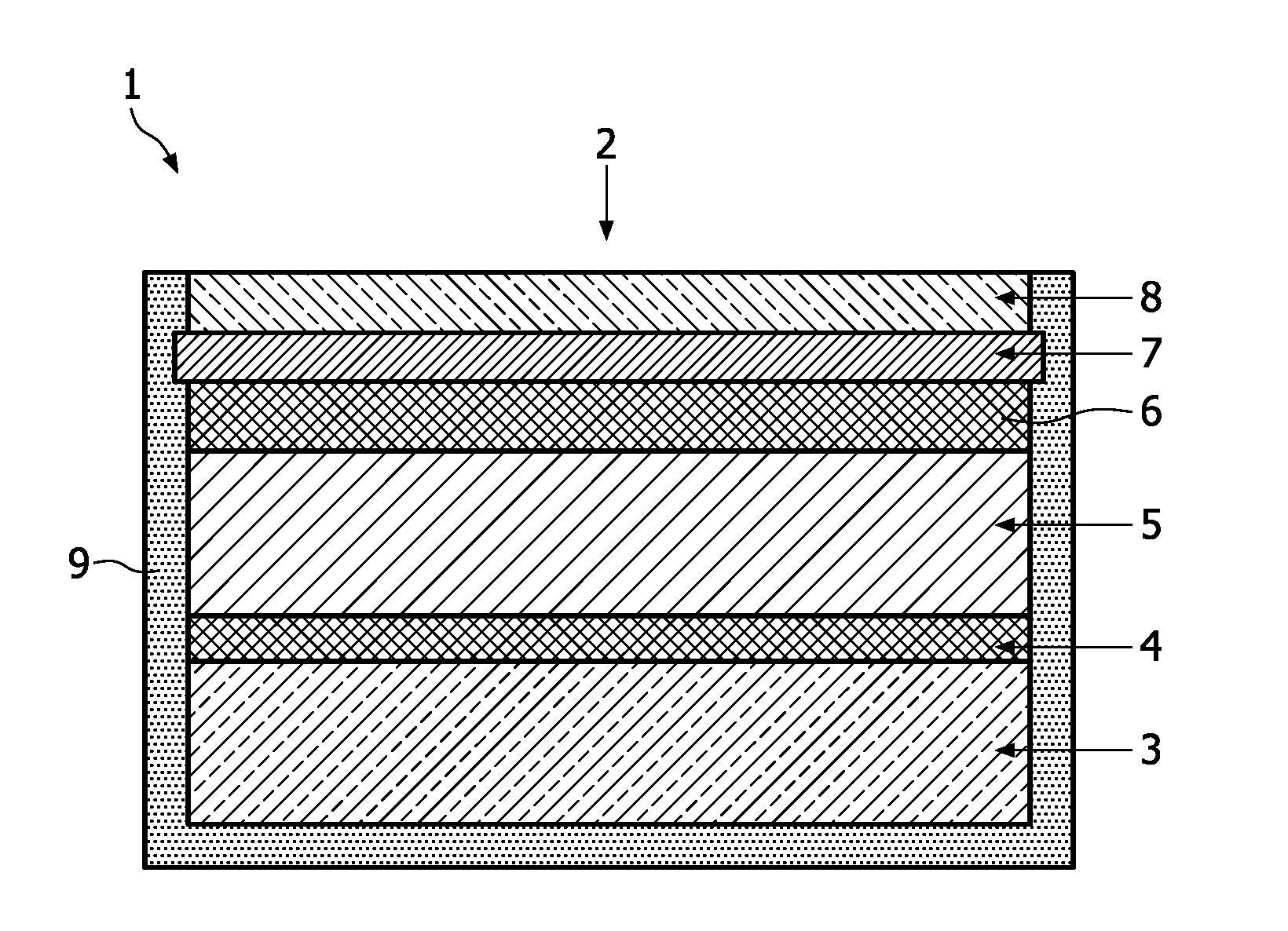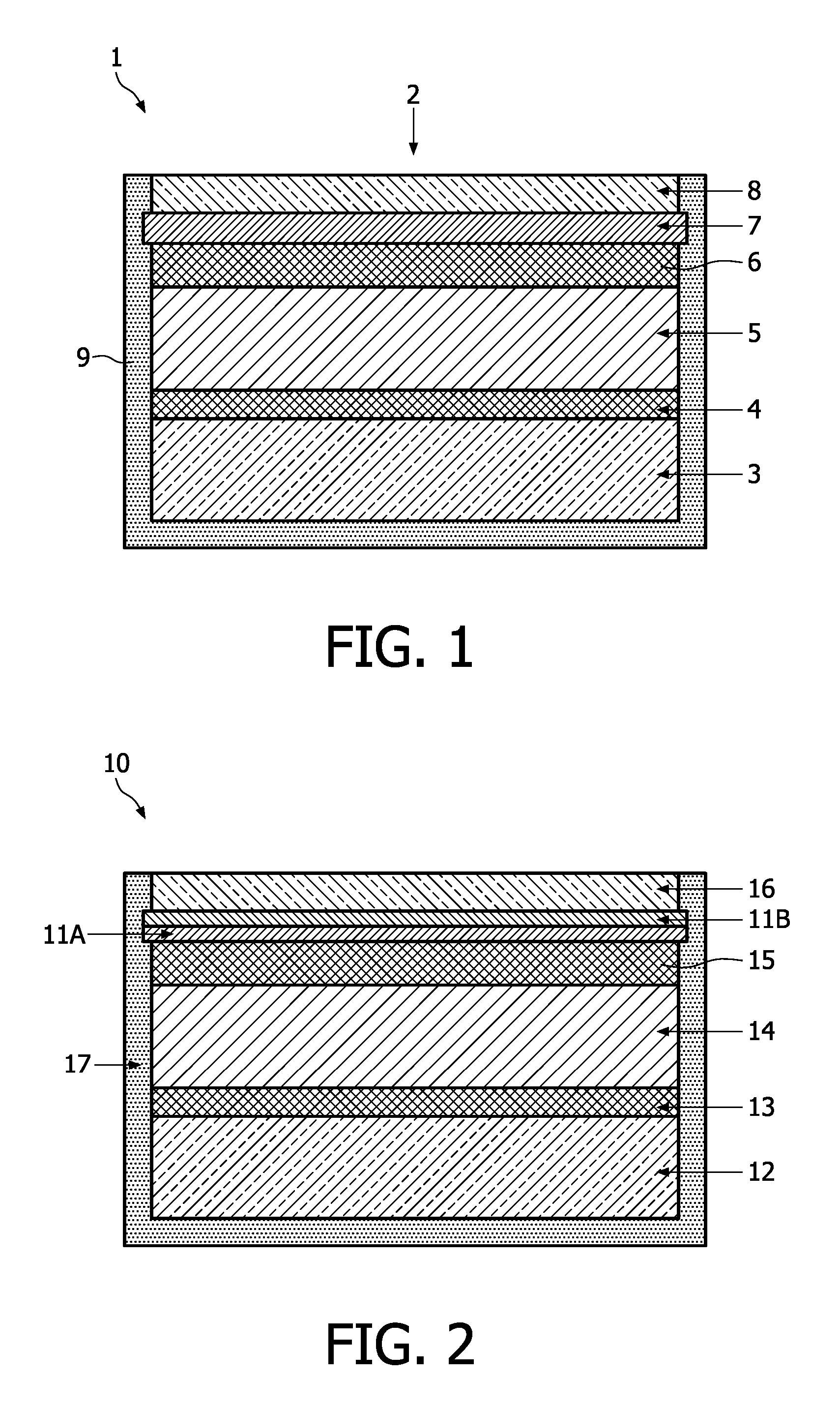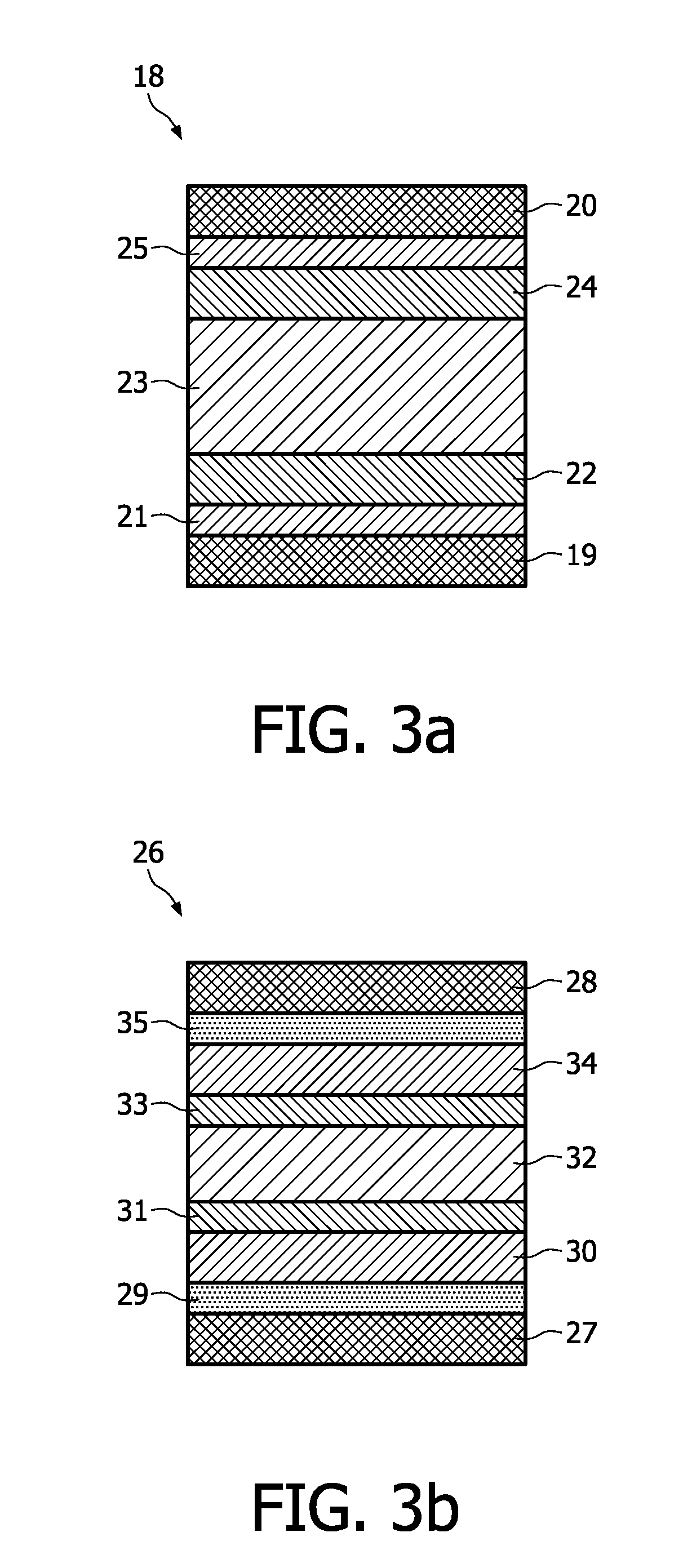Electrochromic device and photodynamic treatment device comprising such an electrochromic device
a technology of electrochromic treatment and electrochromic device, which is applied in the field of electrochromic device, can solve the problems of limited application of known pdt devices and a single wavelength available for photodynamic therapy, and achieve the effect of maximizing and tuning the transmission, effective emission of a desired specific spectrum, and large lighting area
- Summary
- Abstract
- Description
- Claims
- Application Information
AI Technical Summary
Benefits of technology
Problems solved by technology
Method used
Image
Examples
Embodiment Construction
[0018]FIG. 1 shows a schematic cross section of an electrochromic device 1 according to the invention. The electrochromic device 1 shown in FIG. 1 is adapted to be used as a photodynamic treatment (PDT) device. The electrochromic device 1 comprises a laminate 2 of a thin-film solid-state battery 3 deposited onto a substrate (not explicitly shown), on top which battery 3 a first separation layer 4, a control unit 5, a second separation layer 6, a polychromatic OLED 7, and a electrochromic window 8 have been deposited successively. The integrated battery 3 is adapted for powering both the polychromatic OLED 7 and electrochromic window 8. The electrochromic window 8 is switchable by means of the control unit 5, and hence can be switched on and off. The electrochromic window 8 is switchable at least between a substantially transparent state and a state in which the window 8 is at least partially opaque. In this manner, the electrochromic window 8 will function in fact as a regulable lig...
PUM
| Property | Measurement | Unit |
|---|---|---|
| wavelength range | aaaaa | aaaaa |
| wavelength range | aaaaa | aaaaa |
| wavelength range | aaaaa | aaaaa |
Abstract
Description
Claims
Application Information
 Login to View More
Login to View More - R&D
- Intellectual Property
- Life Sciences
- Materials
- Tech Scout
- Unparalleled Data Quality
- Higher Quality Content
- 60% Fewer Hallucinations
Browse by: Latest US Patents, China's latest patents, Technical Efficacy Thesaurus, Application Domain, Technology Topic, Popular Technical Reports.
© 2025 PatSnap. All rights reserved.Legal|Privacy policy|Modern Slavery Act Transparency Statement|Sitemap|About US| Contact US: help@patsnap.com



